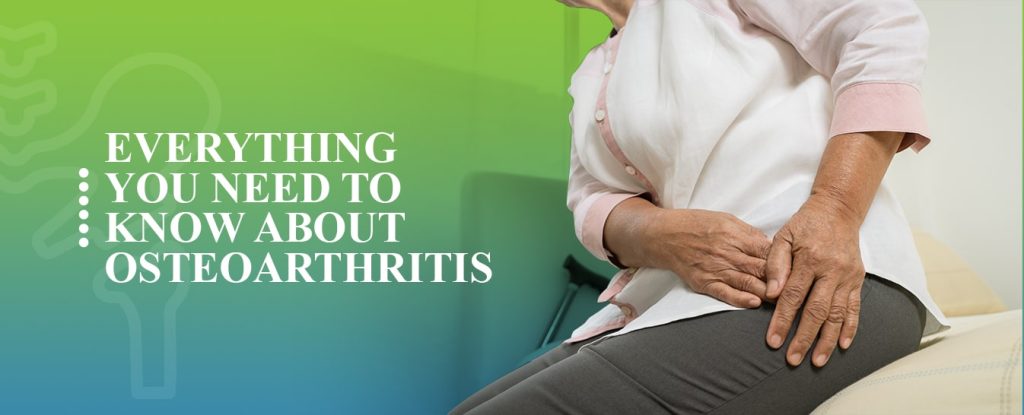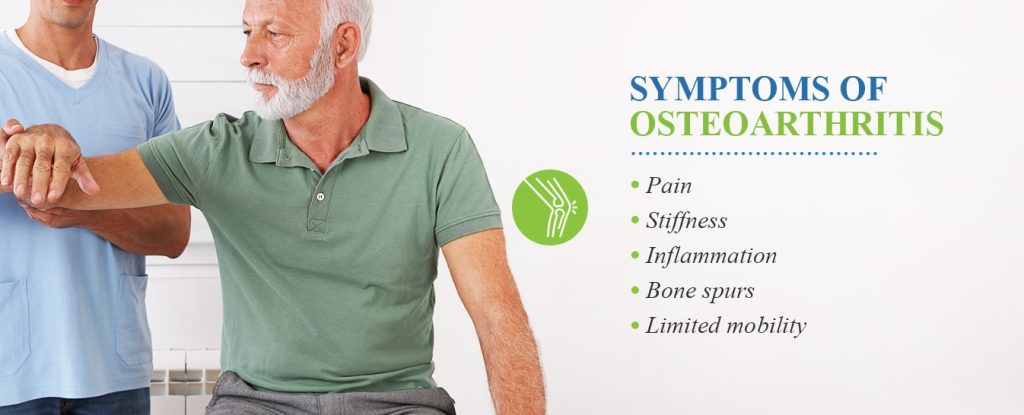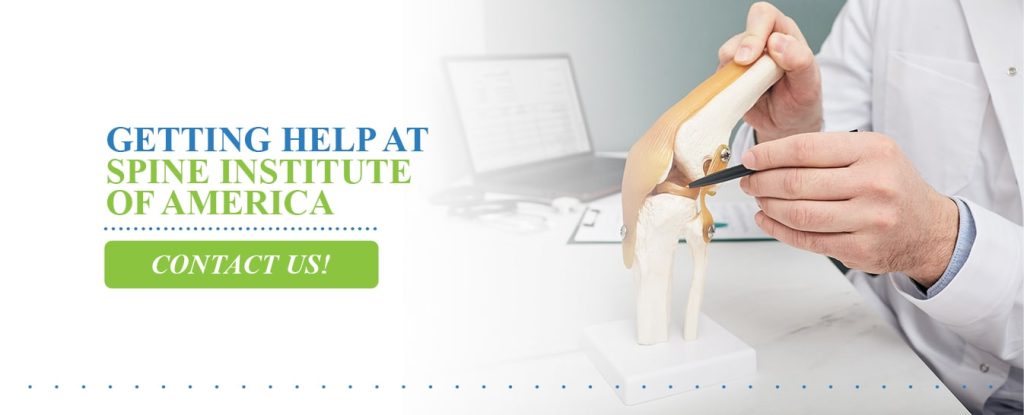As we age, we expect our bodies to slow down a little. Stiff or achy joints when we wake up in the morning or spend a day exercising no longer surprise us. But what happens when that joint pain becomes chronic or even debilitating? The pain may be due to an acute injury, or it could be a condition known as osteoarthritis.
What are the causes of osteoarthritis? Is osteoarthritis serious? When is it time to see a doctor about osteoarthritis? More than 32.5 million adults in the U.S. suffer from the condition. If you are one of them, take the time to learn about osteoarthritis and how to treat it.
What Is Osteoarthritis?
Osteoarthritis, the most common type of arthritis, occurs when the cartilage that provides cushioning between the bones of your joints begins to break down. This process earns osteoarthritis the nickname of “wear-and-tear arthritis.” Osteoarthritis is a progressive disease that develops over time. It can affect any of your joints, although some areas of the body are more commonly affected than others. The damage that osteoarthritis causes to your joints cannot be undone, but you can manage your symptoms.
Where Does Osteoarthritis Occur?
Here are some of the sites most commonly affected by osteoarthritis:
- Hands: Approximately 25% of men and 50% of women will develop osteoarthritis of the hand by the time they turn 85. The hand includes 27 different bones: 14 in the fingers, five in the middle of the hand and eight in the wrist. All of the joints between those bones have the potential to develop osteoarthritis.
- Hips: Osteoarthritis of the hip affects the ball and socket joint formed by the pelvis bone and the head of the thighbone. Pain caused by this condition may occur at the hip or in other areas of the body, like the groin, thigh, buttocks or even the knee.
- Spine: The spine has facet joints, which are cushioned by cartilage like other joints in the body. This cartilage can wear down over time leading to osteoarthritis. The lower back is the most common part of the spine affected by osteoarthritis.
- Knees: Osteoarthritis of the knee is the most common type of osteoarthritis. We spend our lives on our feet walking, running and playing. Over time, that repeated movement can wear down the cartilage in our knee joints, leading to osteoarthritis.
Symptoms of Osteoarthritis
What are the signs of osteoarthritis?
- Pain: Pain is one of the most commonly recognized symptoms of osteoarthritis. As the cartilage between joints becomes worn, the ends of the joints rub together, causing discomfort and pain. The bony surface of your joints can become rough, and you may feel pain in the tissues surrounding your joints as well.
- Stiffness: Stiffness is a hallmark of osteoarthritis. You might feel that your joints are stiff and not as flexible first thing in the morning or at the end of your day.
- Inflammation: Joints affected by osteoarthritis may become inflamed and swollen. The irritation caused by the joints rubbing together could lead to swelling of the soft tissue around the joint.
- Bone spurs: Bone spurs are protrusions that develop along the edges of bones. While many types of bone spurs can be asymptomatic, it is possible that they can cause pain and affect your range of motion.
- Limited mobility: The symptoms of osteoarthritis can worsen over time. Consistent and worsening feelings of pain and stiffness will likely have a negative impact on your mobility.
What Are the Main Causes of Osteoarthritis?
While osteoarthritis is a common condition, not everyone will develop this disease. Risk factors for osteoarthritis include:
- Age: Our joints are subject to wear and tear as we age. The risk of developing osteoarthritis increases as we grow older.
- Sex: Women are more likely than men to suffer from osteoarthritis. Though the exact reason women are at higher risk than men for this disease is not known, factors like hormones, menopause, differences in anatomy and obesity rates may play a role.
- Weight: Obesity is a risk factor for developing osteoarthritis. Excess weight puts more pressure on your joints, and obesity can contribute to joint inflammation.
- Previous injuries: Joint injuries, such as those caused by playing sports, can increase the risk of osteoarthritis — even if the injuries were sustained when you were younger.
- Lifestyle: Certain jobs or hobbies can put repeated stress on your joints. These kinds of lifestyles can increase the risk of osteoarthritis.
- Genetics: Genetics can also play a role in the risk of developing osteoarthritis.
Osteoarthritis vs. Rheumatoid Arthritis
Osteoarthritis and rheumatoid arthritis have similar symptoms, but they are two different conditions with separate causes. Both conditions cause joint pain and stiffness. Osteoarthritis is a disease that develops over time due to the wear and tear of the cartilage. Rheumatoid arthritis is actually an autoimmune disease — the body attacks healthy joint tissue causing the symptoms. Unlike osteoarthritis, rheumatoid arthritis can have a rapid onset. People who have rheumatoid arthritis tend to experience symmetrical joint pain, while people with osteoarthritis can have asymmetrical joint pain.
Is Osteoarthritis Serious if Left Unmanaged?
The stages of osteoarthritis range from grade 0 to grade 4. The earlier you address osteoarthritis, the better. Though the wearing down of your joints is not reversible, by seeking treatment, you can manage your symptoms and slow the progression of the disease.
Grade 0 osteoarthritis means no signs of the condition show up on an X-ray of the joint in question. Grade 1 osteoarthritis may show narrowing of the joint space and the presence of bone spurs. When the disease progresses to grade 2, clear bone spurs are present with narrowed joint space. Grade 3 involves bone spurs, narrowing of the joint space and the possibility of bone deformity. In the final and most severe stage of osteoarthritis, the affected joint or joints have bone spurs, narrowing and bone deformity.
When to See a Doctor About Osteoarthritis
Joint pain and stiffness can be debilitating, but these symptoms may have causes other than osteoarthritis. If you suspect you have osteoarthritis, eliminate any doubts and seek a formal diagnosis from a doctor. A doctor will be able to determine how far the condition has progressed and recommend the best osteoarthritis treatments for your symptoms.
Getting Help at Spine Institute of America
Living with osteoarthritis does not have to mean living with constant pain. Our pain management doctors are here to provide accurate diagnoses and minimally invasive treatments to help you regain your quality of life. Contact us to make an appointment for a free consultation and start your journey to pain relief.











